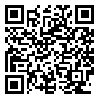BibTeX | RIS | EndNote | Medlars | ProCite | Reference Manager | RefWorks
Send citation to:
URL: http://rjms.iums.ac.ir/article-1-329-en.html
Wresting is one of the most involve sports in sport injuries. Because of Increasing number of wrestlers in Iran as the native sports, and lack of a precise study about the cervical root lesion and associated peripheral nerve lesion, we decided to study prevalence, type, involved root of probable cervical radiculopathy and also associated predisposing factor in 40 wrestlers, age range of 36-63 year and minimum 10 years of wrestling in Tehran.
These groups were examined clinically, then by electrodiagnostic study and finally were referred for MRI study of cervical spins. Following results were obtained by electrodiagnostic studies in 40 persons and MRI in 21 persons. About 45% of patients studied by electrodiagnosis had cervical Radiculopathy. All of patients studied by MRI were reported by radiologist to have one type of cervical spine involvement as follows: degenerative changes: 61%, disc protrusion: 28%, cervical canal stenosis: 19%, and disc extrusion: 9%.
The most common involved root in electrodiagnostic study was bilatrally C6 root lesion. The most common involved level in MRI was C5-C6 disc disease. There was no statistically significant correlation between root lesion and previous nerve Injury, age and years of wrestling.
Based on this concept that electrodiagnostic is the most specefic test, MRI was calcuated to have 41.6% specifity and 100% sensitivity in evaluation of cervical root lesion. Twenty seven percent of cases had associated peripheral nerve lesion of upper limb, among these bilatrally capral tunnel “15%” , tardy ulnar palsy “12.5%” were most prominent. There was high statistical correlation between ulnar nerve lesion and previous elbow injury. Fifty four percent of patients had concomittant peripheral nerve injury and cervical root lesion “Double crush syndrome”.





